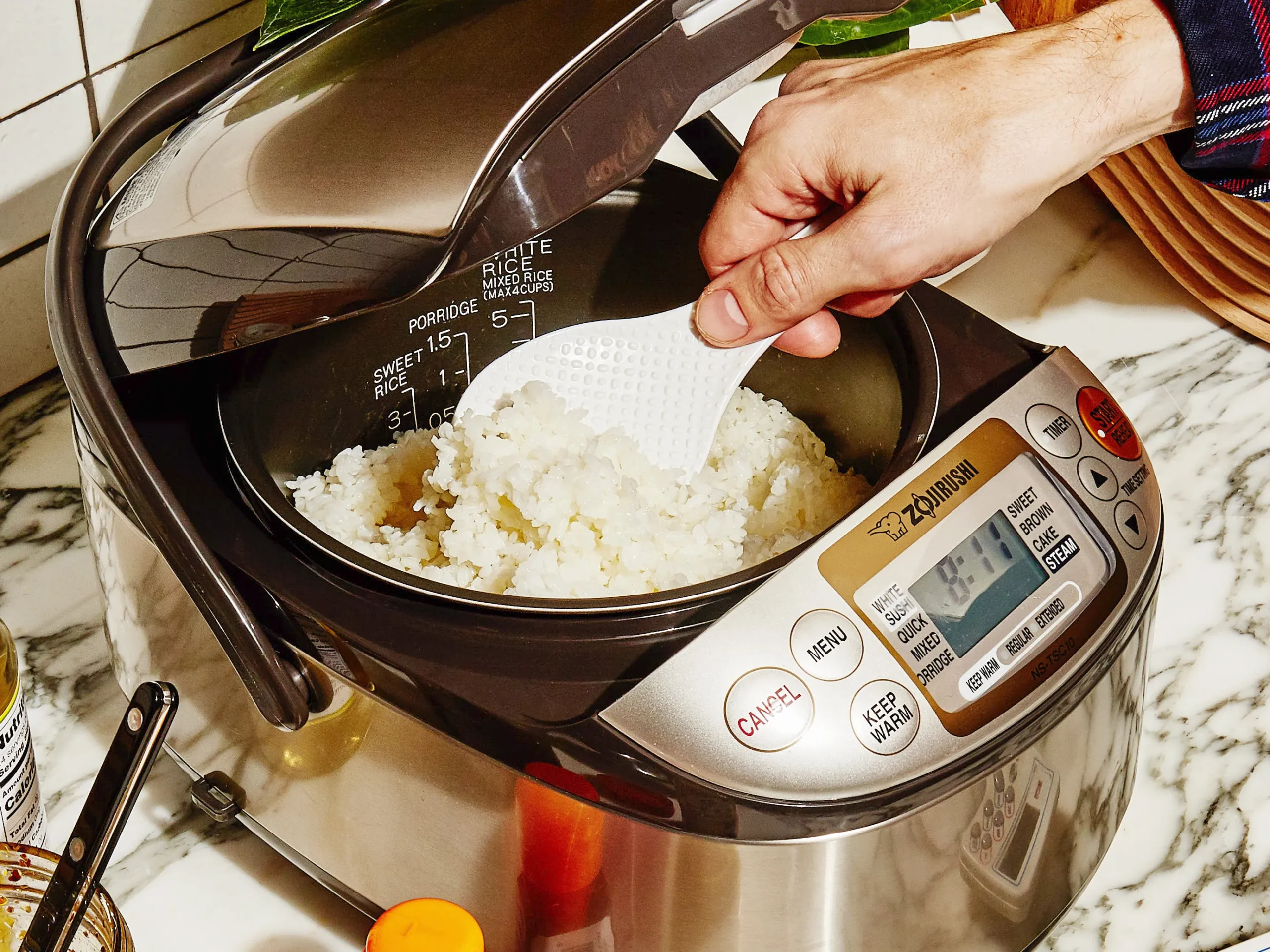Rice is a staple in many diets around the world, and the quest for the perfect bowl of rice has led to the development of advanced rice cookers, particularly by Japanese manufacturers. In this deep dive by TheKitchenApplianceDad.com, we’ll explore whether Japanese rice cookers truly outshine their Western counterparts and what sets them apart in terms of technology and performance.
Japan has a deep cultural connection with rice, which is reflected in the meticulous care taken in preparing it. Japanese rice cookers are often lauded for their precision and innovation. But what exactly makes them stand out?
Japanese rice cookers are renowned for incorporating the latest technology, such as fuzzy logic and induction heating. Fuzzy logic allows the cooker to make adjustments to the temperature and cooking time in real-time, ensuring perfect results every time. Induction heating provides even cooking and can bring out the full flavor and texture of the rice.
The range of settings on Japanese rice cookers is impressive. They can accommodate different types of rice, from white and brown to sushi and GABA-enhanced rice, each requiring specific cooking methods. These cookers often include settings for porridge, steaming, and even baking cakes.

Japanese rice cookers are built to last. They often feature high-quality materials, such as thick inner cooking pans that distribute heat evenly and ensure durability.
Zojirushi
Tiger
Panasonic
Western rice cookers tend to be more straightforward and less expensive. They often focus on basic functionality, catering to a market that may not consume rice as frequently or with as much variety.
Many Western rice cookers offer one-touch operation, making them user-friendly for those who want a no-fuss approach to cooking rice.
Western models frequently focus on multipurpose use, doubling as slow cookers or steamers, giving users more cooking options with a single appliance.
With fewer specialized features, Western rice cookers are typically more affordable, making them accessible to a wider range of consumers.
While it’s clear that Japanese rice cookers offer superior technology and specialized features, the question remains: Do they produce better rice? The answer often depends on the user’s needs and the type of rice they are cooking.
If you’re passionate about rice and enjoy a wide range of types and styles, a Japanese rice cooker may provide the precision and versatility you desire. The advanced features can make a noticeable difference in flavor and texture, particularly with sushi or specialty rices that demand exacting preparation.
For those who eat rice occasionally and don’t require specialized settings, a Western rice cooker can be more than sufficient. These models are designed for ease of use and versatility, providing a satisfactory experience for the average user.
The debate between Japanese and Western rice cookers isn’t about which is outright better but rather which is better for your specific needs and preferences. Japanese rice cookers are the result of a culture that holds rice in high regard, bringing advanced technology to the table for those who share that passion. Western rice cookers offer simplicity and versatility, catering to a market with different cooking habits and priorities.
At TheKitchenApplianceDad.com, we believe that the right appliance can transform your cooking experience, whether you’re a rice aficionado or just enjoy an occasional side of fluffy grains. Remember, the best rice cooker is the one that serves your needs the most effectively, whether that’s rooted in tradition and technology from the East or the simplicity and pragmatism of the West. Happy rice cooking!

